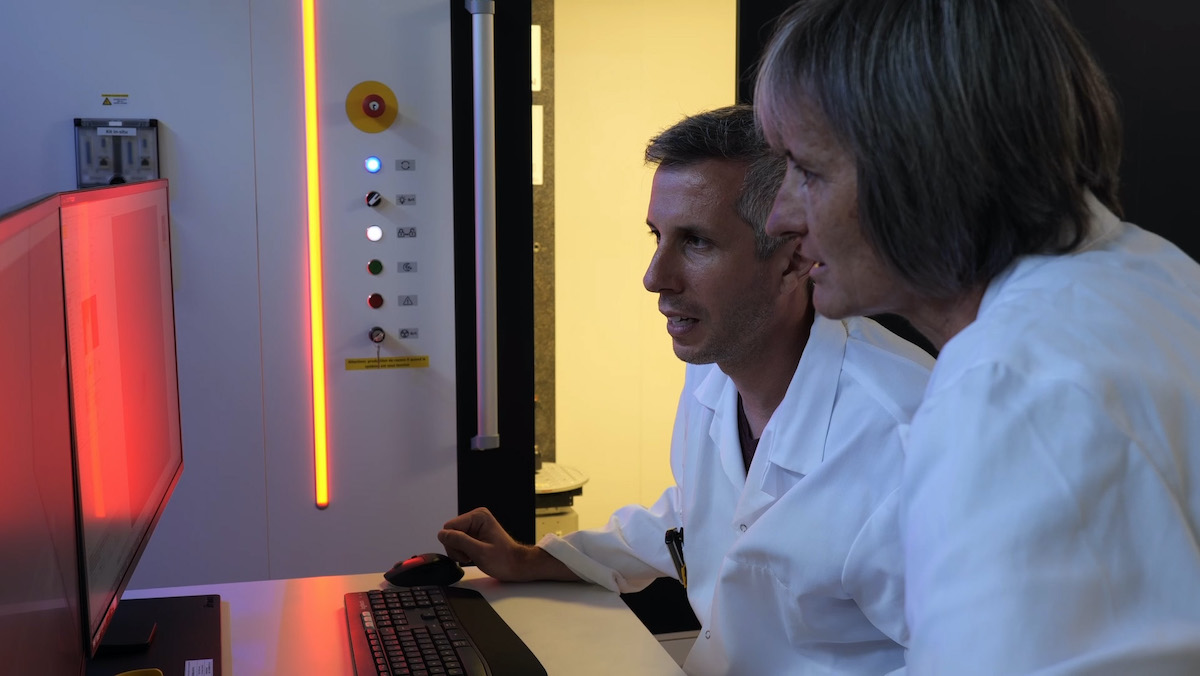Members Login

Channels
Special Offers & Promotions
University of Pau Installs First Ever Spectral CT Analytical Composition Capability for Micro-CT from TESCAN

Uni Pau brings sychrotron-like power to their lab; applies chemical analysis to micro-CT research in geosciences, energy, materials, medicine and more
TESCAN ORSAY HOLDING a.s. announces the first installation of its UniTOM XL with the new Spectral CT capability at University of Pau’s DMEX Centre for X-ray Imaging, Pau, France. Spectral CT provides chemical information at any point inside a sample, which is not possible using micro-CT alone.
With Spectral CT scientists can now see the most subtle changes in material composition and purity, and low contrast materials, such as polymers, can be differentiated from each other. Uni Pau will be using Spectral CT to push the boundaries of x-ray imaging across a wide variety of research applications: green energy (biofuels and reviewable energy sources); materials science (toxic elements in paints and other materials); medicine (how strontium, a natural element in bone health, plays a role in Alzheimer’s and osteoporosis); conservation of historical buildings and artwork; and more.
“The use of Spectral CT for chemical mapping will be critically important across all of these applications,” said Dr. Wesley De Boever, product marketing manager, TESCAN. “Now, with Spectral CT, research facilities like Uni Pau have synchrotron-like power in their lab. They can easily get a 3D map of the mineralogy of a geological sample – which is a big advantage when studying pyrite crystals, quartz, calcite, etc. And they can quickly detect heavy metals in paint and dyes. And of course, this capability is especially important for just about everything in energy research.”
According to Uni Pau’s Peter Moonen, professor at Pau University and director of the Centre for X-ray Imaging, “With the UniTOM XL and Spectral CT, we can cover a very wide energy range, low energy for biological samples and high energy for materials science applications like studying composites, which make it the ideal solution for our scientifically diverse lab.” Moonen adds, “Most importantly, however, Spectral CT is the first solution that brings chemical analysis to micro-CT, and we are very excited about the opportunity to work with TESCAN to continue to advance this technique an push the capabilities of x-ray imaging forward.”
Spectral CT was launched by TESAN in 2022 and is an option for TESCAN’s UniTOM XL and CoreTOM micro-CT systems. It can be added to existing TESCAN UniTOM XL or CoreTOM instruments without compromising any of the system’s features. It is a complete hardware/software solution that is integrated into the micro-CT system for extreme ease-of-use, with only one click needed to switch between structural and spectral information. A full software suite features acquisition, reconstruction and analysis of spectral data.
Watch the video interview with Uni Pau featuring the Spectral CT solution.
TESCAN enables nanoscale investigation and analysis within the geosciences, materials science, life sciences and semiconductor industries. The company has a 30-year history of developing innovative electron microscopy, micro-computed tomography, and related software solutions for customers in research and industry worldwide. As a result, TESCAN has earned a leading position in micro- and nanotechnology.
TESCAN ORSAY HOLDING was established in 2013 as a result of long-term expansion and establishment of subsidiaries worldwide, including France-based ORSAY PHYSICS, a world leader in customized focused ion and electron beam technology. TESCAN ORSAY HOLDING maintains its headquarters, production and R&D in Brno, Czech Republic. Every TESCAN microscope is expertly produced in Brno and shipped to customers worldwide.
Media Partners


